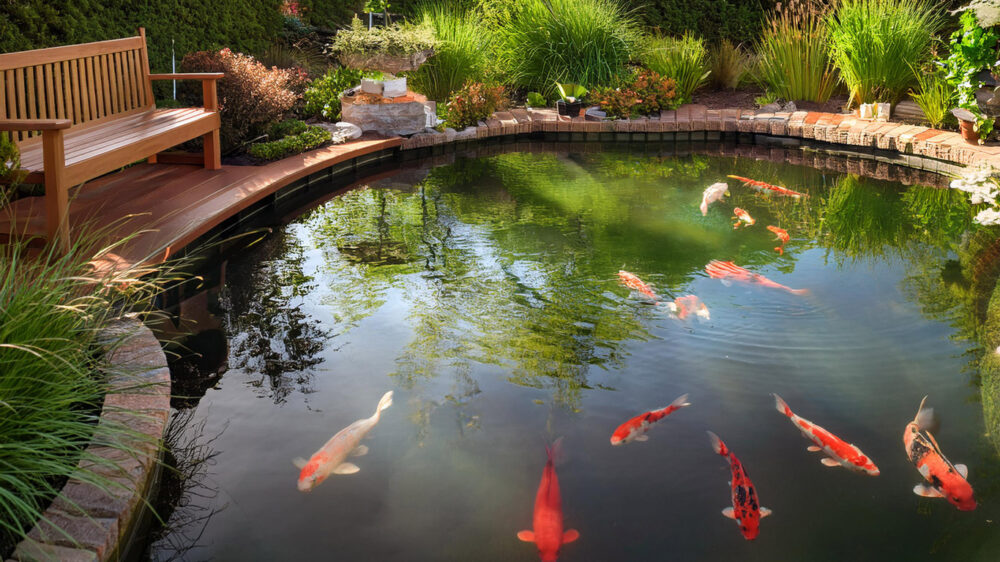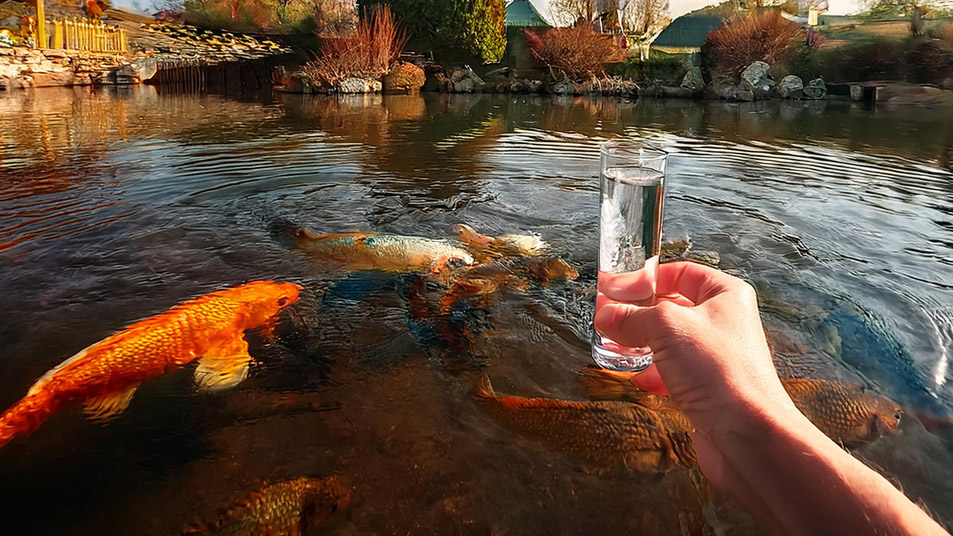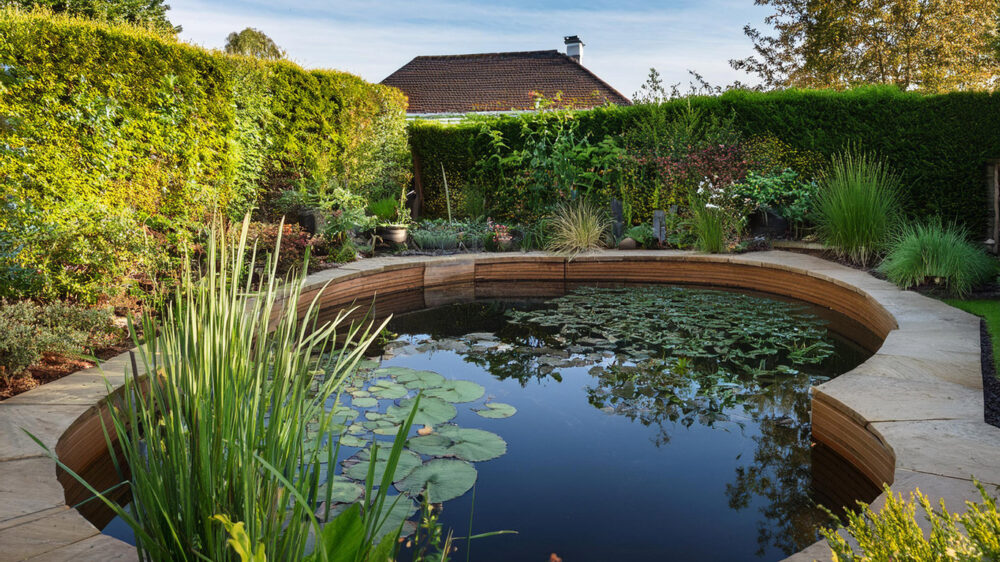A koi pond isn’t just a water feature—it’s a living ecosystem that requires the right balance to keep your fish healthy and the water crystal clear. While koi are hardy fish, their environment needs regular maintenance to prevent issues like algae buildup, poor water quality, and disease.

If you’re new to koi pond care, don’t worry! This guide will walk you through the essentials of maintaining a healthy pond, so you can enjoy your beautiful koi for years to come.
1. Understanding Your Koi Pond’s Ecosystem
A koi pond is more than just water and fish—it’s a delicate ecosystem that includes:
- Fish (Koi & Others): Your pond’s main inhabitants, koi produce waste that affects water quality.
- Plants: Provide oxygen, shade, and natural filtration.
- Filtration System: Removes debris and harmful toxins.
- Aeration (Air Pumps or Waterfalls): Keeps oxygen levels high for healthy fish.
- Beneficial Bacteria: Break down waste and prevent harmful ammonia buildup.
Each part of your pond plays a role in keeping the water balanced and your koi stress-free.
2. Regular Water Testing: The Key to a Healthy Pond
Just because your water looks clear doesn’t mean it’s healthy! Test your pond water at least once a week, checking for:

- pH Levels: Koi thrive in a pH range of 7.0 to 8.5.
- Ammonia & Nitrites: Should be zero—high levels are toxic to fish.
- Nitrates: Should be below 40 ppm to avoid algae growth.
- Oxygen Levels: Aeration prevents oxygen depletion, especially in warm months.
💡 Pro Tip: If ammonia or nitrite levels rise, do a partial water change (about 20-30%) to restore balance.
3. Filtration: Keeping Your Water Clean
A good filtration system is crucial for removing fish waste, uneaten food, and other debris. Your system should include:
- Mechanical Filtration: Traps solid waste (leaves, dirt, uneaten food).
- Biological Filtration: Uses beneficial bacteria to break down harmful toxins.
- UV Clarifier: Helps eliminate green water algae by killing free-floating algae spores.
🛠 Maintenance Tip: Clean your mechanical filter weekly and check your biological filter monthly to ensure proper function.
4. Preventing Algae & Keeping Water Clear
Algae is one of the most common problems in koi ponds. Too much can deplete oxygen levels and make your pond look murky. Here’s how to control algae naturally:
- Use Aquatic Plants: Water lilies and submerged plants shade the water and absorb excess nutrients.
- Limit Sunlight Exposure: Too much direct sunlight encourages algae growth.
- Add Beneficial Bacteria: Helps break down organic waste that feeds algae.
- Install a UV Clarifier: Kills free-floating algae before they multiply.

🌱 Pro Tip: Avoid overfeeding your koi—uneaten food decomposes and contributes to algae blooms!
5. Feeding Your Koi the Right Way
Feeding koi is one of the most enjoyable parts of pond keeping, but too much food can cause water quality issues. Follow these guidelines:
- Feed only what they can eat in 5 minutes—remove any excess food.
- Use high-quality koi food with proper nutrients for growth and color.
Adjust feeding based on temperature:
- Above 65°F (18°C): Feed 1-2 times daily.
- 50-65°F (10-18°C): Feed every other day.
- Below 50°F (10°C): Stop feeding—koi’s digestion slows down.
🐟 Pro Tip:In colder months, switch to a low-protein wheat germ food to help digestion.
6. Seasonal Maintenance: Keeping Your Pond Healthy Year-Round
Your koi pond requires different care depending on the season:
Spring (Waking Up the Pond)
- Perform a deep clean—remove debris and check equipment.
- Restart filtration and beneficial bacteria.
- Slowly reintroduce feeding as temperatures rise.
Summer (Peak Activity)
- Increase aeration to keep oxygen levels high.
- Regularly check for overgrowth of algae and ammonia spikes.
- Perform small water changes every few weeks to maintain balance.
Fall (Preparing for Winter)
- Remove fallen leaves to prevent decay and ammonia buildup.
- Start cutting back on feeding as temperatures drop.
- Clean filters and check pond aeration for winter.
Winter (Keeping Koi Safe)
- Never let the pond completely freeze—use a floating de-icer.
- Stop feeding koi when the water is below 50°F (10°C).
- Keep an air pump running for oxygenation.
7. Common Koi Pond Problems & Solutions
Here are a few common issues beginners face and how to fix them:
- Green Water (Algae Bloom): Use a UV clarifier and aquatic plants to control algae.
- Murky or Cloudy Water: Check filtration and reduce fish waste with water changes.
- Fish Gasping at Surface: Low oxygen—add aeration with an air pump or fountain.
- Koi Flashing (Rubbing Against Surfaces): Possible parasite or water quality issue—test water immediately.
🛠 Quick Fix: If your koi seem stressed, do a partial water change and check filtration immediately.
Final Thoughts: Keeping Your Koi Pond Beautiful & Healthy
A well-maintained koi pond brings beauty and tranquility to your space, but it requires consistent care to stay balanced. By following these beginner-friendly tips, you’ll create a healthy environment for your koi while enjoying a clear and beautiful pond year-round.
- Test water regularly
- Keep filters clean
- Control algae naturally
- Feed koi properly
- Perform seasonal maintenance
With the right routine, your koi pond will thrive, providing you with years of enjoyment and happy, healthy fish!
Leave a Reply